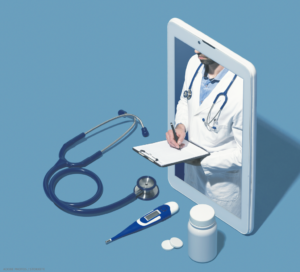 Patients with systemic lupus erythematosus (SLE) often face many concerns, fears and uncertainties that render “treatment decision making very difficult,” says Jasvinder Singh, MD, MPH, professor of medicine and epidemiology at the University of Alabama at Birmingham. Often these patients, who tend to be women from minority groups, “do not have access to easily understandable patient care materials to help them with decision making,” he says.
Patients with systemic lupus erythematosus (SLE) often face many concerns, fears and uncertainties that render “treatment decision making very difficult,” says Jasvinder Singh, MD, MPH, professor of medicine and epidemiology at the University of Alabama at Birmingham. Often these patients, who tend to be women from minority groups, “do not have access to easily understandable patient care materials to help them with decision making,” he says.
Dr. Singh led a project, funded by the Patient-Centered Outcomes Research Institute (PCORI), at the University of Alabama to develop a medication decision tool for patients with lupus. The Shared Decision Making in Lupus Electronic (SMILE) decision aid provides culturally tailored, self-administered, computerized assistance for patients. Dr. Singh and colleagues designed the tool for people with limited literacy and limited health literacy, including racial and ethnic minorities. The researchers received direct guidance from Black, Hispanic and Asian people, who are disproportionately affected by lupus. A total of 52 individuals with lupus nephritis and 100 with lupus gave feedback on the initial content and design.1-3
When tested in a U.S.-based, multi-center trial in 301 patients with lupus nephritis, the online decision aid surpassed a paper pamphlet on lupus from the ACR in decreasing patient conflict in the choice of immunosuppressive medications and improving informed treatment choice by patients. More patients rated the information in the online tool as excellent for understanding the impact of lupus, risk factors, medication options and evidence about medications than did so for the pamphlet. Patients also rated the ease of use of materials higher for the online tool than the pamphlet.

Dr. Singh
In 2021, Dr. Singh and colleagues implemented the online tool across 15 U.S. sites, aiming to reach at least 500 patients.1,4
The free smartphone app and website for the lupus patient decision aid are available for use during in-clinic visits, at home and with telemedicine visits. More than 2,500 patients with lupus in 18 U.S. centers have now used the decision aid, according to Dr. Singh.
Decision Making for Patients
“There are a lot of decisions to be made when you have lupus. The key is making an informed decision,” says Susan M. Manzi, MD, MPH, medical director of the Lupus Foundation of America, Washington, D.C., and chair of the Allegheny Health Network Medicine Institute, Pittsburgh.
“Being informed means you have to understand the disease, the rationale for the intervention or treatment, and the benefits and risks of saying yes or no. This requires effective communication between the doctor and the patient,” Dr. Manzi says. “Any opportunity to allow a patient to choose from acceptable options fosters a sense of control and reduces the fear of being out of control.”
Dr. Singh explains that patients with lupus are generally young to middle-aged women, and lupus is often the first chronic disease they have experienced. “Frequently, the disease manifests with unusual symptoms and is sometimes difficult to diagnose, with diagnoses delayed for years. The disease can present with mild symptoms, such as skin rash or joint pain, or with severe symptoms that involve the kidneys, brain, heart, lungs and other vital organs. Therefore, the disease itself can be very scary.”
Patients initially presenting with symptoms of lupus are often prescribed local skin treatments or glucocorticoid medication. Glucocorticoids are effective in treating mild, moderate and severe symptoms, but they have a lot of short- and long-term side effects, most of which are irreversible. “Therefore, the intent is to use them [for the] short term to gain control, while the definitive therapy with immunosuppressive medication is introduced,” Dr. Singh explains.
Decision Challenges
Patients often show reluctance to make the switch from an effective, more toxic steroid to an equally effective, less toxic immunosuppressive. They perceive the benefit of immunosuppressive drugs as much lower than that of steroids, and “the fear of the side effects with immunosuppressive drugs in most patients’ minds is more than that for steroids,” says Dr. Singh. Some immunosuppressive drugs in much higher doses are also used to treat cancer, “which evokes additional negative feelings from patients,” Dr. Singh explains. “This leads to a major challenge for many patients, who might decline this definitive, effective and safe therapy for lupus, which can be both organ-saving and lifesaving in patients with severe lupus.”
“Therefore, the patient is frequently faced with difficult decisions: What should I do for the disease? Can I wait? Should I take one of these medications that are also used in different doses for cancer chemotherapy? Will I get side effects? Will the disease or its treatments affect my ability to live and to have a family?” says Dr. Singh. Another challenge exists: Lupus severity presents much higher in minority groups and in those with lower socioeconomic status—groups that may have unequal access to healthcare providers and health information. These groups also present with lower health literacy, graphical literacy and numeracy, which makes it difficult for them to take full advantage of health education materials available to people with lupus, Dr. Singh explains.

Dr. Manzi
Regarding health literacy, Dr. Manzi suggests doctors may forget their audience and talk to patients using medical terminology. Often, patients feel too embarrassed to ask questions or say that they don’t understand. Patients may hesitate to express their concerns about taking a prescribed medication or undergoing additional testing. They may also feel reluctant to share that they lack transportation or are struggling financially. These barriers lead to noncompliance, which “is often not a patient being defiant, but a gap in communication between the doctor and the patient about the potential barriers to compliance or fears about side effects,” Dr. Manzi says.
Importance of Shared Decision Making
Patients need to be active participants to get the best outcomes. They should be clear about what their goals are and what is most important to them. Physicians should be clear on what steps are needed to meet those goals. “If the patient and doctor are not aligned on the goal—how to get there and how to address the obstacles—it will be a frustrating experience for everyone,” Dr. Manzi says.
Dr. Singh calls shared decision making the “cornerstone of rheumatology care” because rheumatologists provide care to patients with uncommon immune conditions, which remain difficult to understand and have a significant impact on lives. Patients with lupus often need treatment with high-risk medications to improve quality of life, preserve vital organ function, and reduce morbidity and mortality related to the condition.
“Shared decision making becomes even more important in lupus, where there are both healthcare disparities in the disease prevalence and disease outcomes. There are challenges of unequal access to health resources and education materials,” says Dr. Singh. “Shared decision making, using patient tools and materials that are usable by all patients, regardless of their socioeconomic status, health literacy, numeracy and graphical literacy, can eliminate some barriers and reduce disparities,” adds Dr. Singh. “Patient empowerment can positively impact both patient satisfaction and disease outcomes.”
The SMILE Decision Aid
The SMILE decision aid can be downloaded from the Google Play Store or the Apple App Store (search for lupus, then find the app, ManageMyLupus) or access it online at www.thelupusguide.com or managemylupus.com. It is available in English and Spanish. “We hope to have more language translations in the future,” Dr. Singh says.
After choosing a language, most lupus patients select the link for Guide A, B, C or D, based on what medication(s) they have tried or are choosing from, while patients with inactive lupus follow the Lupus Light link.
The SMILE tool comprises information on the disease, how lupus affects the body, what patients can expect with flares and periods of quiet disease; a comparison of various treatment options for both mild lupus and severe lupus; information on medication benefits and side effects; and coverage of sex-specific issues, including pregnancy, lactation, fertility and planning a family.
The decision-making aid is easy to understand and accessible to people with a fifth-grade education or above, without requiring advanced health literacy, graphical literacy or numeracy. Patients can access the tool before or after clinic visits with the rheumatologist to better understand the treatment options offered to them and to ask questions of the doctor about the disease, its management and treatment options.
“The SMILE lupus tool serves as a conversation starter and allows the patient and the provider to ask and answer specific questions related to one’s disease and allows one to make choices that are consistent with one’s values and preferences,” Dr. Singh says.
Clinician & Patient Benefits
Clinicians can use the SMILE tool as a standardized information system for all patients diagnosed with lupus. It may help educate a newly diagnosed patient about lupus, available treatments and what to expect should a patient experience mild, moderate or severe manifestations of lupus.
The tool “can reinforce the messages doctors discuss with the patient during the visit,” Dr. Singh explains. “If a treatment change is being considered by the provider, they can have patients review specific drugs within the decision tool where both their benefits and risks are discussed. Patients can then have a follow-up discussion with the provider to make a shared decision about which treatment best suits their current condition, consistent with their values and preferences.”
Dr. Singh notes that the tool provides “information on the benefits and risks of steroids that can help patients make informed decisions about when to continue and when to taper steroids. The tool has helpful suggestions for patients about how to mitigate some of the common side effects of other medications and manage these. It can also be used to inform the patient regarding the benefit of common adult immunizations, and how this can mitigate some of the potential side effects of lupus treatments.”
The SMILE tool can also help initiate conversations about pregnancy, fertility and family planning with patients with lupus.
“The tool provides an electronic, individualized and culturally sensitive decision aid for patients choosing options for treating lupus. It addresses health literacy and provides patients with options for treatment, while limiting those options to treatments with equal efficacy,” Dr. Manzi says. “This is shared decision making. Patients feel like they have more control over a disease that can be highly unpredictable.”
Katie Robinson is a medical writer based in New York.
References
- Singh JA, Fraenkel L, Green C, et al. Individualized decision aid for diverse women with lupus nephritis (IDEA-WON): A randomized controlled trial. PLoS Med. 2019 May 8;16(5):e1002800.
- Singh J, Yazdany J, Chatham W, et al. A personalized decision aid to help women with lupus nephritis from racially and ethnically diverse backgrounds make decisions about taking immune-blocking medicines. Washington (DC): Patient-Centered Outcomes Research Institute (PCORI); October 2019.
- Yen EY, Singh RR. Brief report: Lupus—an unrecognized leading cause of death in young females: A population-based study using nationwide death certificates, 2000–2015. Arthritis Rheumatol. 2018;70(8):1251–1255.
- Singh JA, Hearld LR, Hall AG, Beasley TM. Implementing the Decision Aid for Lupus (IDEAL): Study protocol of a multi-site implementation trial with observational, case study design: Implementing the DEcision-Aid for Lupus. Implement Sci Commun. 2021 Mar;2(1):30.



